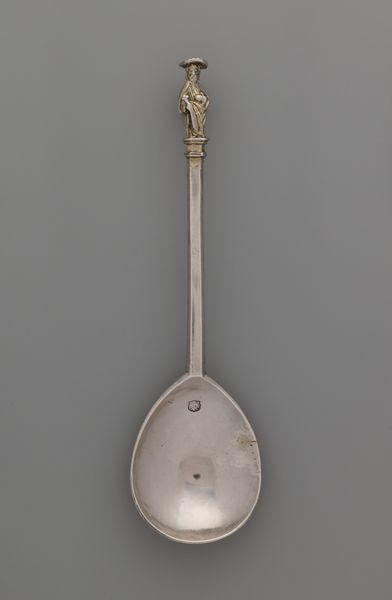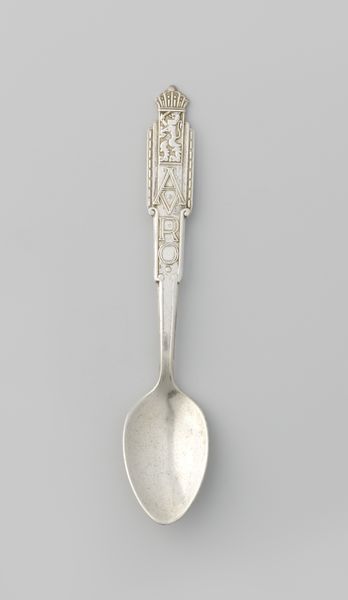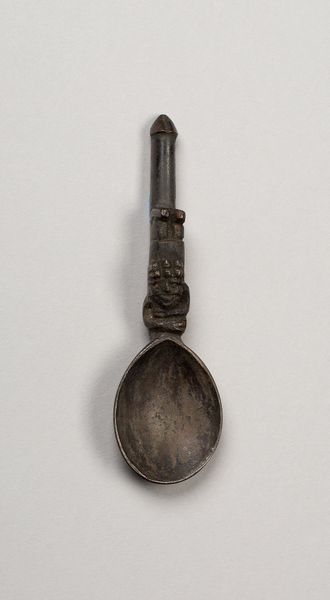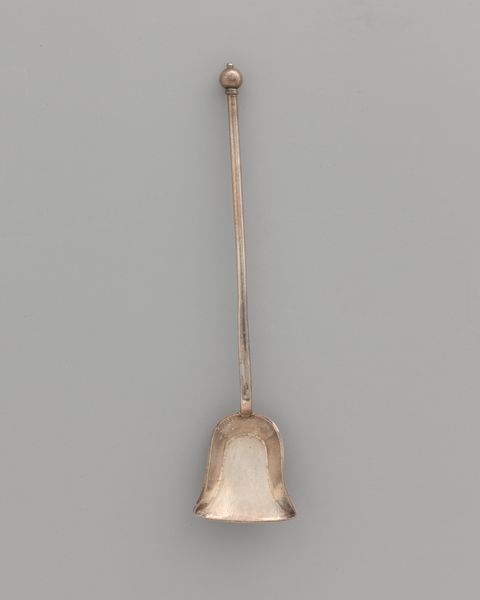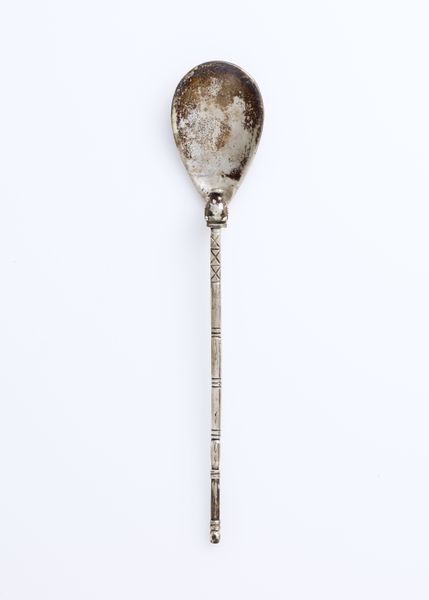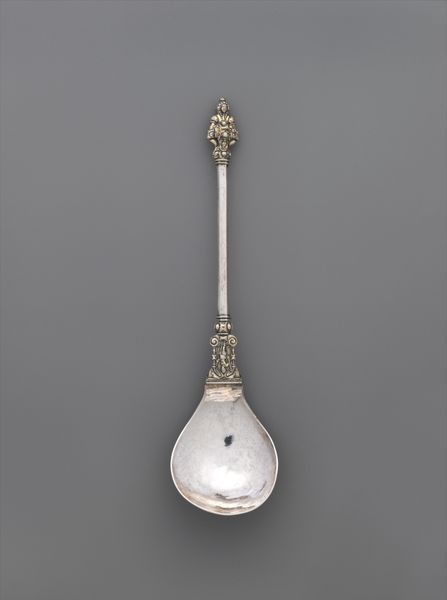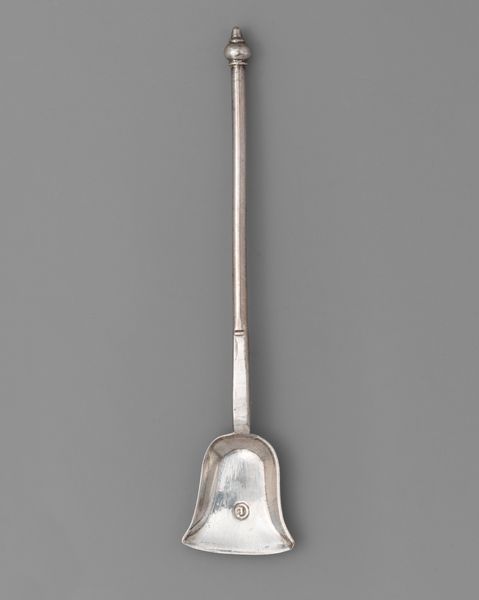
Herinneringslepel met eivormige bak en steel bekroond met Willem III en Mary 1689
0:00
0:00
anonymous
Rijksmuseum
silver, metal, sculpture
#
portrait
#
silver
#
baroque
#
metal
#
figuration
#
sculpture
#
history-painting
Dimensions: length 20 cm, width 5.1 cm, weight 62 gr
Copyright: Rijks Museum: Open Domain
Curator: Look at this silver 'Herinneringslepel met eivormige bak en steel bekroond met Willem III en Mary,' a commemorative spoon dating back to 1689 and currently residing here at the Rijksmuseum. What’s your initial take? Editor: Striking. There’s something about taking such precious materials, silver in this case, and forming it into an everyday object, a spoon, yet topping it with a baroque sculpture that just grabs attention. A humble object given enormous social weight, don’t you think? Curator: Absolutely. Think about the socio-political landscape of the time. This spoon commemorates William and Mary, key figures in Dutch and British history. It’s fascinating to consider the symbolic value of such an object circulating within a specific social context. Editor: Precisely. It’s more than just a utensil; it’s a statement of allegiance, maybe even a symbol of aspirational values for those who commissioned it. Were such spoons commissioned by the court and then broadly sold to the population as propaganda? Curator: The scale and craft really speak to material worth. You can just tell, this spoon wasn’t hastily made. The crafting involved indicates some level of artisanal mastery. Did specific silversmiths gain favor creating objects celebrating these political marriages? Editor: A very good question. Likely, the patrons of specific makers shaped their social standing through their crafting ability. Furthermore, considering the use of silver itself—its value as currency and trade—highlights the economic structures supporting the regime celebrated. Who owned it matters; a humble family or a titled collector? Curator: It begs the question about distribution and accessibility. Was it merely a symbol to reflect the powerful, or was it functional, a tangible signifier embraced across wider societal levels? Editor: So, what do we glean from it now? What value does it have for modern viewers as an artwork in our collection? Curator: Well, it is useful to highlight art's relationship with broader sociopolitical systems and also the relationship between artistry and value making. Editor: Precisely. I think understanding the relationship of labor and object connects contemporary society to older ideas. I've really changed my mind about it, thinking about it!
Comments
No comments
Be the first to comment and join the conversation on the ultimate creative platform.

